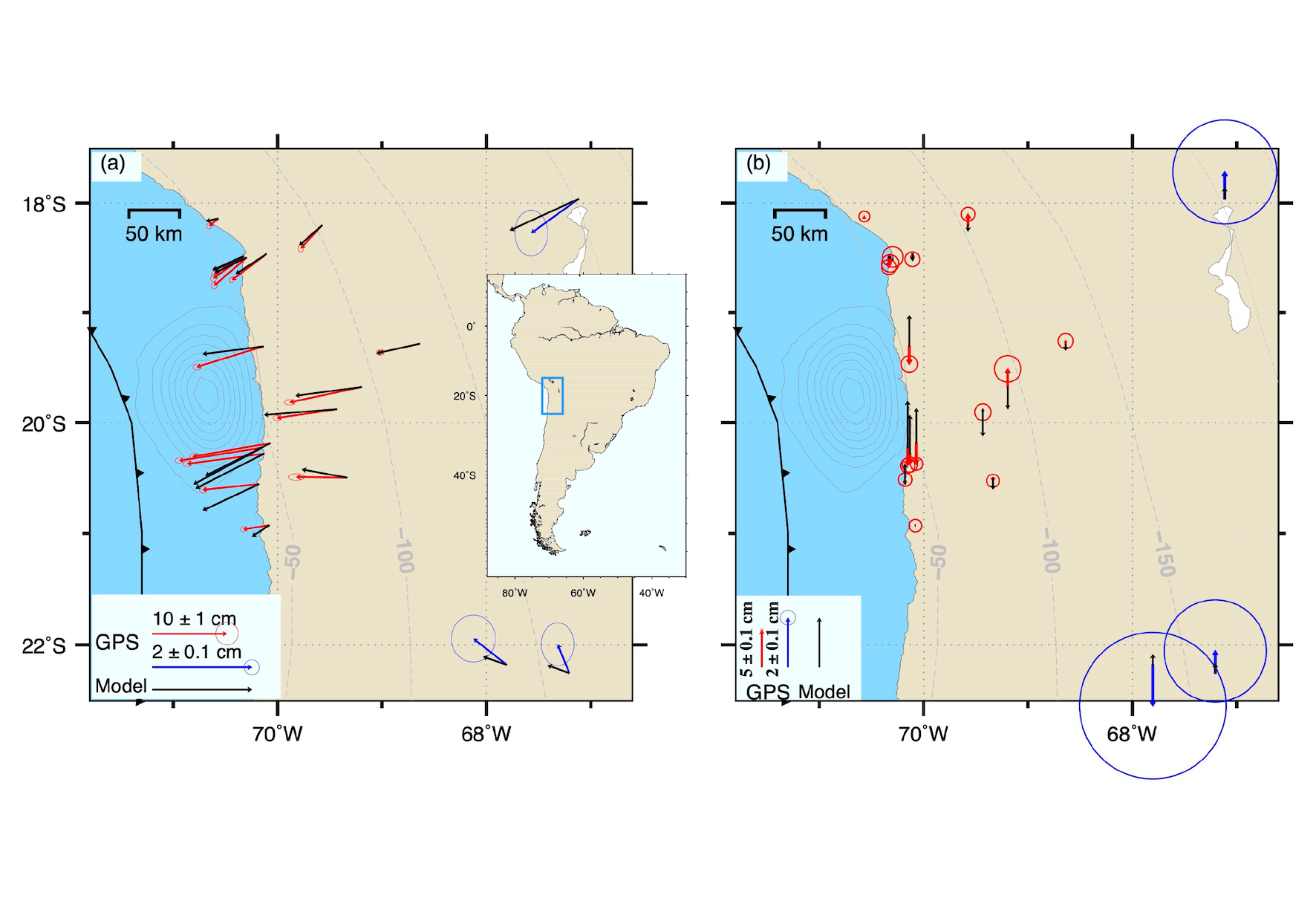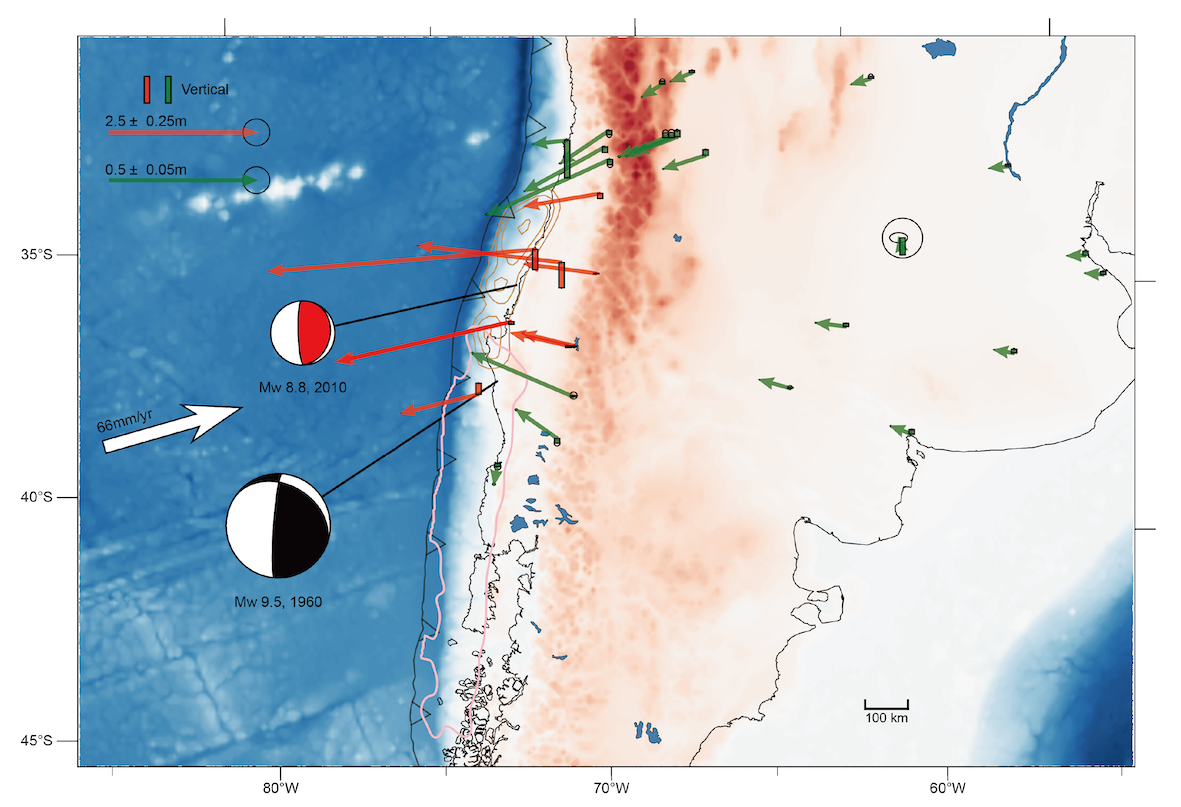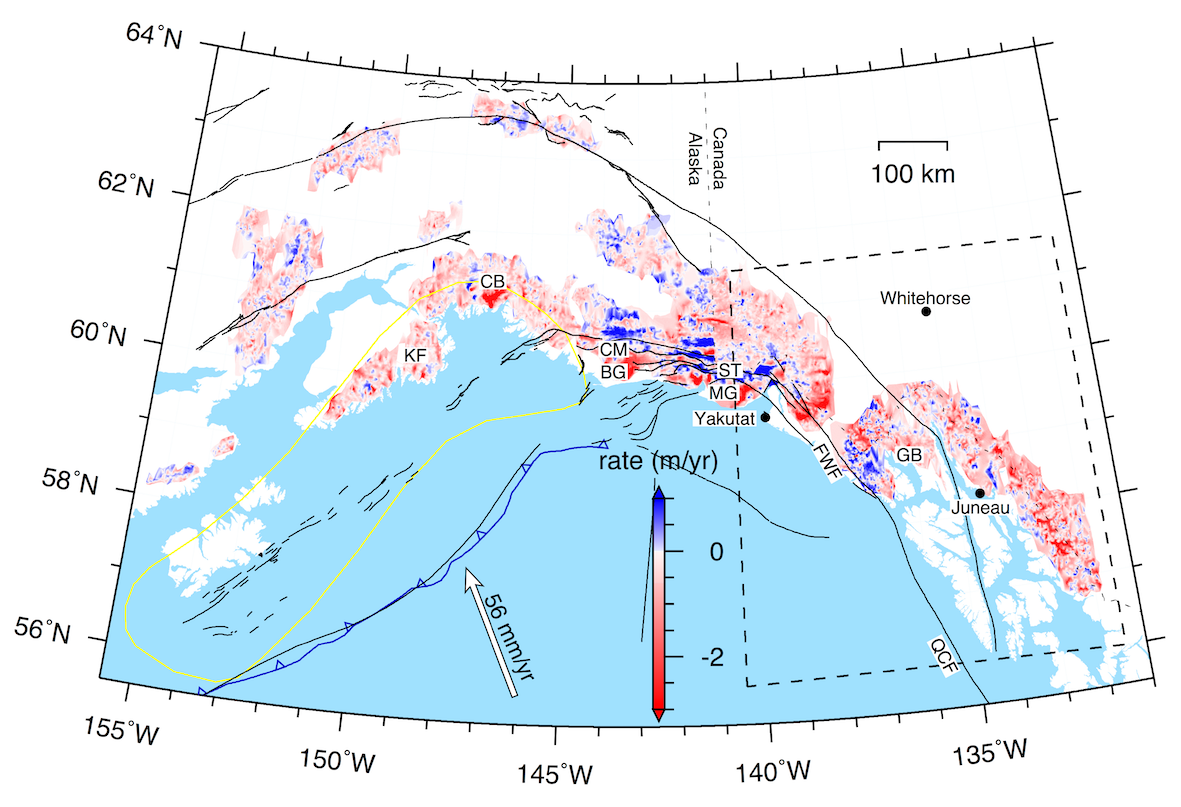


An improved understanding of postseismic crustal deformation following large subduction earthquakes may help to better understand the rheological properties of upper mantle and the slip behavior of subduction interface. Here we construct a three-dimensional viscoelastic finite element model to study the postseismic deformation of the 2014 MW8.1 Iquique, Chile earthquake. Elastic units in the model include the subducting slab, continental and oceanic lithospheres. Rheological units include the mantle wedge, the oceanic asthenosphere and upper mantle. We use a 2 km thick weak shear zone attached to the subduction fault to simulate the time-dependent stress-driven afterslip.
Read More
We optimized a three dimensional viscoelastic finite element model to study the postseismic deformation of the 2010 Mw8.8 Maule earthquake. We processed more than 80 continuous GPS time series. We first correct the time series for the pre-earthquake trends, seasonal and secular motions. Then we fit the post-earthquake time series with logarithmic and exponential functions. At last, we calculate the postseismic displacements at any given time window from the fitted curve. The preferred model reproduces the overall pattern of the postseismic GPS observations at different time windows. This work was published on Acta Seismologica Sinica. 张懿行, 胡岩, Segun Steven Bodunde (20
Read More
Global Positioning System observations in Southeast Alaska show evidence for interannual variations in uplift rates, which are consistent with an acceleration of mass loss rates across the region from the 1990s to 2012. We constructed an updated regional loading model based on updated twentieth century average deglaciation estimates. This model features a larger mass loss rate overall than the model used in previous studies. We adopted a viscosity model with an upper and lower mantle viscosity from VM5a but with a low viscosity asthenosphere as in previous regional studies. We varied the asthenospheric thickness, asthenospheric viscosity, and lithospheric thickness to fi
Read MoreCopyright © Geodynamics Research Center,USTC/DSEL. All Rights Reserved.